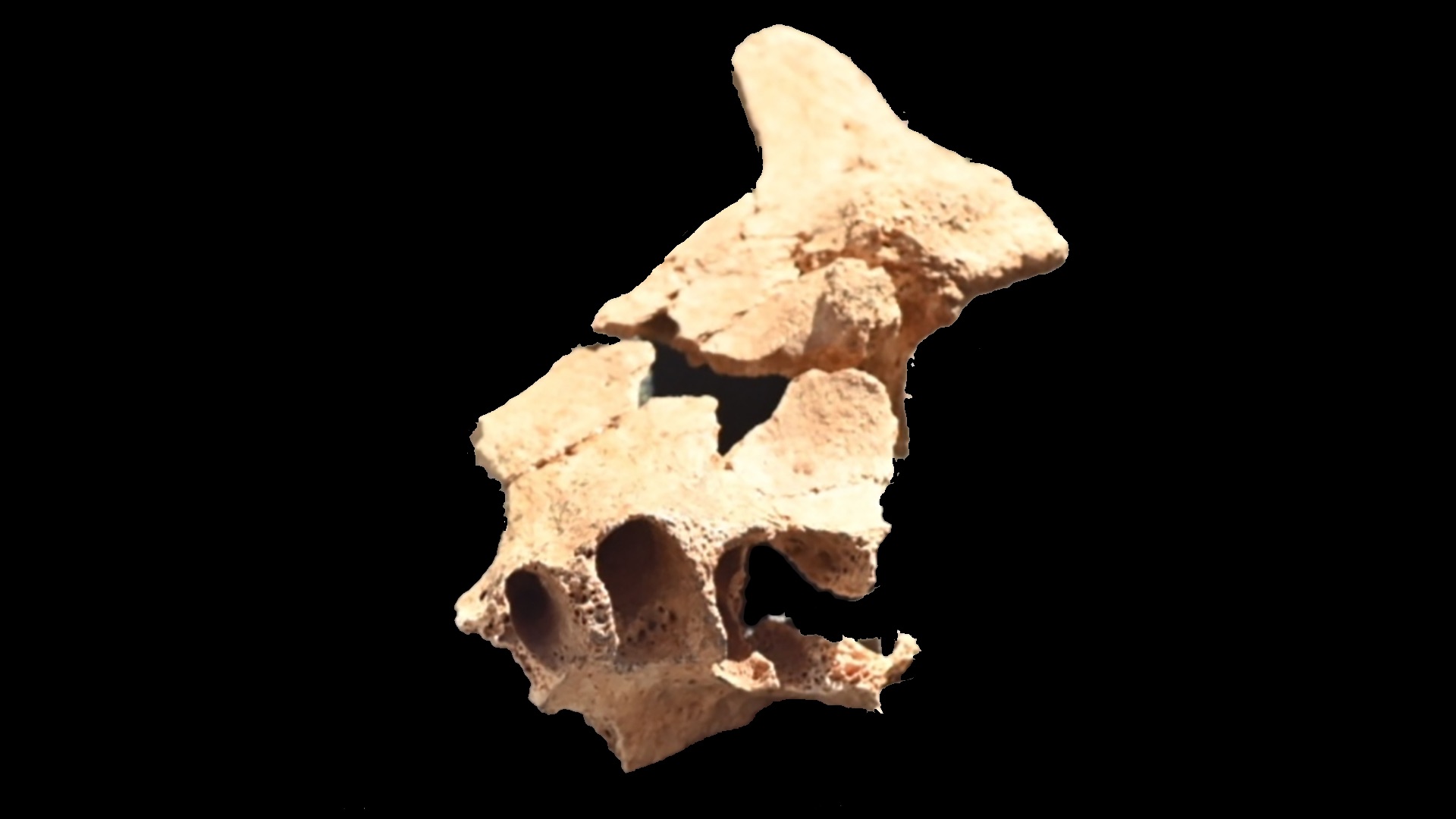1.4 million-year-old jawbone may belong to oldest known human relative in Europe
The fossil was found in Spain and included a tooth.

An ancient upper jawbone discovered in Spain reveals the unique facial features of an individual who may be the oldest known ancient human relative in Europe.
A team of paleoanthropologists unearthed the fossil in June at Sima del Elefante (Spanish for "Pit of the Elephant"), an archeological site in the Atapuerca Mountains near the city of Burgos in northern Spain that's known for its rich fossil record. The fragmented skull is believed to be the oldest of its kind ever found in Europe and includes part of the upper jawbone (maxilla) and a tooth of a hominid who lived approximately 1.4 million years ago, the researchers said in a translated statement. The hominid group includes all living and extinct members of the human and great ape family tree, including humans and our early human relatives, as well as chimpanzees and gorillas, according to The Australian Museum.
Prior to this discovery, the earliest known hominid fossils unearthed in Europe (found at Sima del Elefante in 2008) were dated to 1.2 million years ago. That find included a portion of a mandible, or the lower jawbone, and several bone fragments, according to a 2012 study published in the British Dental Journal.
Related: 10 fascinating findings about our human ancestors from 2021
The most recent discovery came as a surprise to researchers, who weren't expecting to find fossils that were older than those already uncovered at the site.
The upper jawbone, located approximately 6.5 feet (2 meters) deeper in the clay soil than the fossils found in 2008, was discovered by Édgar Téllez, a doctoral student at the National Center for Research on Human Evolution in Burgos, according to El País, a daily newspaper in Spain.
Paleoanthropologists believe that, similar to the previous fossilized find, the upper jawbone exhibits characteristics that showcase the evolutionary pattern of the human face.
Get the world’s most fascinating discoveries delivered straight to your inbox.
"In this maxilla there is also a vertical projection, as in the mandible found in [2008], which could indicate that this modern face was already present at this time," Téllez told El País.
In other words, Téllez and his team theorize that the bone could be that of someone who was more closely related to modern-day Europeans than more ape-like primates, such as Homo habilis, an extinct species of archaic humans from Africa dating to the Pleistocene epoch (2.6 million years ago to 11,700 years ago). The researchers believe that the fossil may have come from Homo antecessor (Latin for "pioneer man"), whose position in the human family tree is controversial but may be a close cousin of modern humans and Neanderthals, according to a 1999 study published in the Journal of Human Evolution. (The first fossilized remains of Homo antecessor were found at Atapuerca in 1994.)
John Hawks, an anthropologist at the University of Wisconsin-Madison, who wasn't affiliated with the recent dig, said that the new discovery helps give insight into the population that initially inhabited this area.
"We don't know yet exactly where this piece of the upper jaw is going to fit, and it's going to take a lot of work and comparison for that team to determine [this]," Hawks told Live Science. "But whatever they determine, this is tied to a site with evidence of behavior. And every piece that we have that's tied to a site with evidence of behavior, such as making stone tools or hunting, tells us the behavioral capacities of ancestors and relatives of ours. For me, that's the important part."
The researchers at the site said that it will take additional study before they can determine the exact age of the upper jawbone and whether it's related to the other fossils found there.
Originally published on Live Science.
Jennifer Nalewicki is former Live Science staff writer and Salt Lake City-based journalist whose work has been featured in The New York Times, Smithsonian Magazine, Scientific American, Popular Mechanics and more. She covers several science topics from planet Earth to paleontology and archaeology to health and culture. Prior to freelancing, Jennifer held an Editor role at Time Inc. Jennifer has a bachelor's degree in Journalism from The University of Texas at Austin.


